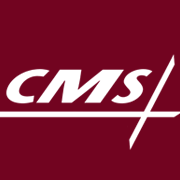CMS Updates Medicare Reimbursement Schedule for Lab Tests
CMS has published a final rule that would calculate Medicare reimbursement amounts for lab tests based on market prices.

- A new methodology for calculating Medicare reimbursement rates for laboratory tests is on the horizon, according to a fact sheet from the Centers of Medicare and Medicaid Services (CMS).

According to a final rule issued this week, Medicare reimbursement rates for clinical diagnostic laboratory tests will be calculated using the weighted median of private payer rates for each test. The rule defines “private payers” as group health plans, health insurance issuers, Medicare Advantage plans under Part C, and Medicaid managed care organizations.
Eligible laboratories will be required to report private payer rates for specific tests, which CMS will use to update the Clinical Laboratory Fee Schedule (CLFS).
“Under the final rule, reporting entities will be required to report private payer payment rates for laboratory tests and the corresponding volumes of tests,” explained the fact sheet. “Private payer rates for laboratory tests from applicable laboratories will be the basis for the revised Medicare payment rates for most laboratory tests on the CLFS beginning in January 2018.”
CMS intends for the new methodology to update Medicare reimbursement rates to reflect market prices for laboratory tests. While Medicare reimburses facilities for about 1,300 different types of clinical diagnostic tests each year, totaling $7 billion, the current CLFS has rarely been updated since its establishment in 1984.
For the system’s first year, the reporting period will begin on January 1, 2017 and continue to the end of March. Eligible laboratories are expected to report on private payer data from January 1 to June 30, 2016.
CMS plans to announce the updated fee schedule by early November 2017.
Going forward, participating facilities will be required to report private payer data every three years, noted the fact sheet.
Despite its overhaul of Medicare reimbursement rates for common procedures, most facilities will not fall under the new rule’s eligibility requirements for reporting.
Applicable laboratories include facilities that receive more than 50 percent of their Medicare revenues from the CLFS or the Physician Fee Schedule and have at least $12,500 in Medicare revenue from the CLFS, stated the rule.
The requirements aim to reduce administrative burden for physician office and smaller independent laboratories since the rule will exclude about 55 percent of independent laboratories and 95 percent of physician office sites.
“However, even though the low expenditure threshold will substantially reduce the number of physician offices and independent laboratories for which private payer rates must be reported, we estimate those physicians and laboratories for which private payer rates will be required to be reported account for approximately 92 percent of CLFS spending on physician office laboratories and approximately 99 percent of CLFS spending on independent laboratories,” stated the fact sheet.
CMS intends to further alleviate administrative burden by requiring reporting to occur at the Taxpayer Identification Number (TIN) level rather than at the provider level. Therefore, all TIN-level entities will have to report on behalf of all of its applicable laboratories.
Additionally, CMS reported that advanced diagnostic laboratory tests, such as genetic analysis, will be paid under a different schedule than clinical diagnostic tests. Advanced procedures will be paid by the actual list charge for the first three quarters after Medicare Part B decides to cover the test or CMS grants the test advanced diagnostic laboratory test status.
Under the rule, the actual list charge is the “publicly available rate on the first day the new ADLT is obtainable by a patient who is covered by private insurance, or marketed to the public as a test a patient can receive, even if the test has not yet been performed on that date.”
To qualify as an advanced test, the procedure must use a unique algorithm to analyze multiple biomarkers of DNA, RNA, or proteins or be approved by the Food and Drug Administration. The test also must be solely performed by a single laboratory.
After the initial period terminates, Medicare reimbursement amounts for the advanced tests will be based on the weighted median of private payer rates.
After its release, several healthcare industry groups have applauded CMS for revising the final rule to accommodate stakeholder concerns with the new system.
The American Hospital Association (AHA) commended CMS for expanding the rule’s reach to include more hospital-based and physician office laboratories as well as pushing out the start date for the system.
“We are pleased that CMS will delay the program start date and include data from hospital-based labs in setting payment rates,” said Tom Nickels, AHA’s Executive Vice President, in a press release. “The one-year delay will give labs more time to develop the technology needed to participate in the program. Including hospital-based labs will better reflect market trends and lead to more appropriate reimbursement.”
The American Clinical Laboratory Association (ACLA) also expressed initial support for the new rule, especially after CMS delayed the implementation date.
"At the heart of the clinical lab community is a shared mission to provide physicians and patients with accurate diagnostic information that will enhance treatment decisions and health outcomes,” stated Alan Mertz, ACLA’s President, in a statement. “A payment system that recognizes value and spurs innovation will protect patient access and allow for even greater scientific discoveries that will continue to positively transform the practice of medicine.”
Dig Deeper:
• 4 Revenue Cycle Management, Claims Reimbursement Strategies
• 5 Claims Reimbursement Questions and Answers
